This page lists the keynote speakers for the main session on Tuesday, August 10, and Wednesday, August 11. For workshop and tutorial speaker information, please see the individual agendas linked on the Workshops and Tutorials page.
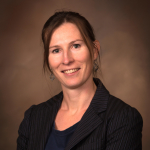 |
Claire AcevedoAssistant Professor of Mechanical Engineering Bio Claire Acevedo’s background and expertise is at the interface between mechanical behavior of materials, biology and experimental high-energy x-ray physics. Her research goals are directed toward understanding the mechanisms of deformation and fracture, and the biological responses at multiple length-scales (from molecular to macroscales). From her PhD study at the Swiss Federal Institute of Technology Lausanne (EPFL), she worked on the influence of residual strains on fatigue resistance of metallic connections using high-energy neutron diffraction instruments. During her postdoc studies at UC Berkeley, UC San Francisco and the Lawrence Berkeley National Lab, her research has centered upon the hierarchical organization and deformations of collagen and mineral nanocomponents to create specific macroscale mechanical properties and resistance to fracture. In biomechanics, she is developing an understanding of the role that osteocyte-mediated remodeling plays in affecting bone quality and how it can be degraded with bone fragility diseases. |
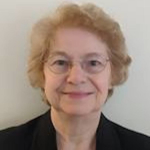 |
Linda HortonAssociate Director of Science for Basic Energy Sciences Bio Dr. Linda L. Horton is the Associate Director of Science for Basic Energy Sciences (BES) in the Department of Energy (DOE) Office of Science (SC). With an annual budget of more than $2 billion, BES is the nation’s leading supporter of fundamental research in materials sciences, chemistry, geosciences, and aspects of biosciences. BES is also a major supporter of scientific user facilities, including the nation’s premier x-ray light sources, neutron scattering facilities, and nanoscale science research centers. These facilities serve over 16,000 users annually, and they provide the tools for the preparation and examination of materials and the study of their physical and chemical properties and transformations. Previously, Dr. Horton was the Director for the Materials Sciences and Engineering (MSE) Division in BES. Since joining DOE in 2009, Dr. Horton has been extensively involved in interdepartmental coordination activities, including serving as the DOE-SC management lead for batteries and energy storage, the SC Early Career Research Program, and is the past co-chair for the OSTP-led Materials Genome Initiative. Her BES roles have included interim leadership of the management team for the newly established Energy Frontier Research Centers. She has served as the materials lead for international activities that included workshops with the European Union on energy storage and critical materials. As part of the BES communication strategy, she had lead responsibility for the “Science Serving the Nation” brochure. Since 2016, she led the BES teams responsible for 7 strategic “basic research needs” workshops/roundtables and the associated brochures and reports. Prior to joining BES, Dr. Horton was the Director of the Center for Nanophase Materials Sciences at Oak Ridge National Laboratory, one of the five DOE national user facilities for nanoscale science research. Her personal research emphasized applications of electron microscopy to materials science problems including investigations of the effects of ion implantation and neutron irradiation and studies of the growth and characterization of diamond thin films. She is a Fellow of ASM International and has served on several national and international advisory committees. In professional service, she has been an officer of the Materials Research Society and of the Microscopy Society of America, Trustee of ASM International, and Vice-Chairman of the DOE Basic Energy Sciences Advisory Committee. Her Ph.D. in Materials Science is from the University of Virginia. |
 |
Julia MundyAssistant Professor of Physics Bio Julia Mundy is an assistant professor in the Department of Physics at Harvard University. She received an AB/AM in Chemistry and Physics from Harvard University and her Ph.D. in Applied Physics from Cornell University. Following her Ph.D. studies, she spent a year at the US Department of Education as the APS/AIP STEM Education Fellow. After a postdoctoral fellowship at UC Berkeley, she returned to Harvard University where she began as an assistant professor in 2018. Prof. Mundy’s research program combines atomically-precise oxide molecular-beam epitaxy with picoscale electron microscopy imaging to design, synthesize and probe new quantum materials. |
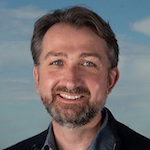 |
David PrendergastSenior Staff Scientist and Director, Theory of Nanostructured Materials Facility Bio David Prendergast is a Senior Staff Scientist and Facility Director for Theory of Nanostructured Materials at the Molecular Foundry, a Department of Energy Nanoscale Science Research Center, at Lawrence Berkeley National Laboratory. He received his Ph.D. in physics from University College Cork in Ireland in 2002 and joined the Foundry as a staff scientist in 2007. In his time at the Foundry, he has developed a remarkably broad multidisciplinary research program, involving X-ray science at the Advanced Light Source, and spanning chemical and materials sciences. David’s research combines first-principles electronic structure theory and molecular dynamics simulations to study energy-relevant processes in complex materials systems at the nanoscale, especially at interfaces, often through direct simulation and interpretation of X-ray spectroscopy experiments. |
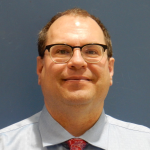 |
Jeff TerryProfessor of Physics Bio Jeff Terry is a professor in both the Physics and Mechanical, Materials, and Aerospace Engineering Departments at the Illinois Institute of Technology, where his main research focus is on energy systems. He is currently Interim Chair of the Social Sciences Department at Illinois Tech. His group works to develop new ways of dealing with radioactive waste; to understand radiation damage mechanisms in materials; and to synthesize novel materials for energy storage and conversion. Prior to joining the faculty at Illinois Tech, he was a staff scientist at Los Alamos National Laboratory. There, he worked on the Stockpile Stewardship and Management Program and the Waste Isolation Pilot Plant (WIPP), and was a member of the team that sent the first waste shipment to WIPP. He is a former scientific director of the Advanced Test Reactor National Scientific User Facility. Terry received his doctorate in chemical physics from Stanford University in 1997 after obtaining a bachelor’s degree in chemistry from the University of Chicago in 1990. |
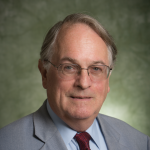 |
Stanley WhittinghamDistinguished Professor, Binghamton University Bio Stan Whittingham is the 2019 Chemistry Nobel Laureate and Distinguished Professor of Chemistry and Materials Science at the Binghamton Campus of the State University of New York. He received his B.A. and D.Phil. from Oxford University in the United Kingdom, where he is an Honorary Fellow of New College. He spent four years in Materials at Stanford University in California. He has been active in Li-batteries since 1971 when he won the Young Author Award of the Electrochemical Society for his work on the solid electrolyte beta-alumina. In 1972, he joined Exxon’s Corporate Research Laboratory and discovered the role of intercalation in battery reactions, which resulted in the first commercial lithium rechargeable batteries that were built by Exxon Enterprises. In 1988 he returned to academia at SUNY Binghamton to initiate a program in materials chemistry. He initiated graduate program in Materials Science and Engineering. He was awarded a JSPS Fellowship in the Physics Department of the University of Tokyo in 1993. From 1993-1999 he was Vice-Provost for Research. In 2004 he received the Battery Division Research Award. He is presently Director of the NECCES EFRC based at Binghamton. In 2012 he received the Yeager Award of the International Battery Association for his lifetime contributions to battery research; in 2015 he received the Lifetime Contributions to Battery Technology award from NAATBaaT, in 2017 the Senior Research Award from Solid State Ionics, and in 2018 was elected a member of the National Academy of Engineering and received the Turnbull Award from the Materials Research Society. He is a Fellow of The Royal Society. He is Vice-Chair, Board of Directors of the New York Battery and Energy Storage Technology Consortium (NYBEST). |
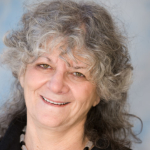 |
Ada YonathProfessor, Weizmann Institute of Science Bio Ada Yonath is focusing on the translation of the genetic code to proteins by ribosomes, on antibiotics hampering this process, on human diseases associated with ribosomal mutations and on origin of life. She initiated these studies despite persistent global skepticism, and introduced forefront key scientific developments, which became the common routine within a few months. She is Directing the Kimmelman Center for Biomolecular Structures at Weizmann Institute (WIS), where she got her PhD and is currently a Professor. She postdoced in Carnegie Mellon, MIT and U. Chicago. In the seventies, she established at WIS the first structural-biology laboratory in Israel, which was the only one in the country for almost a decade. During 1986-2004 she headed Max-Planck-Research-Unit-for Ribosome-Structure in Hamburg, in parallel to her WIS activities. Among others, she is a member of US-National Academy; British Royal Society; Israel Academy; German Leopoldina; Pontificia Accademia-delle-Scienze (Vatican); Japanese, Korean, Italian and European Academies, and holds honorary doctorates from over 45 Universities worldwide. Her awards include Louisa-Gross-Horwitz, Wolf, Harvey & Israel prizes; Linus-Pauling Gold Medal; UNESCO/L’Oreal Award; Albert-Einstein Award for Excellence; and 2009 Nobel Prize. |